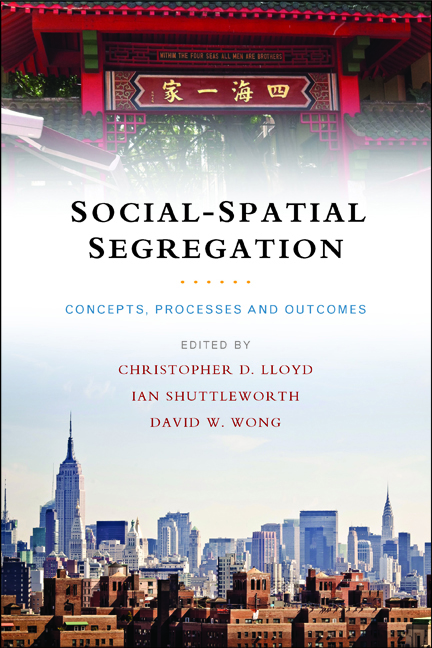seven - Analysing segregation using individualised neighbourhoods
Published online by Cambridge University Press: 04 March 2022
Summary
Introduction
Discussions concerning the strengths and weaknesses of different measures of segregation have a long tradition (Wirth, 1938; McKenzie et al, 1967; Wilson, 1987; Massey and Denton, 1993). In 1988, Massey and Denton suggested that it is perhaps not very important which measure is used, since different measures generally tend to capture the same thing (1988). However, even if different measures are indeed correlated, there is still a need for precisely defined measures in order to allow comparisons between different urban areas (see Chapters Two and Three, this volume). A claim that the level of segregation is higher in City A than in City B presupposes that the measures used truthfully represent a real difference in the residential patterns of the two cities. This is even more so if measurements of segregation are going to be used to analyse the determinants of segregation patterns, to study the consequences of different levels of segregation, or in urban and regional planning and policy.
Having a measure that truthfully reflects differences in residential patterns between cities is important if segregation measures are to be used as explanatory variables in statistical analysis. Statistical theory teaches us that measurement errors in explanatory variables will lead to biased parameter estimates. This implies that there is a strong need for accurate measures in research focused on testing hypotheses about the effect of segregation on social outcomes as well.
It could be argued that there are two major shortcomings in existing measures of segregation, and that both are linked to the use of pre-defined statistical areas. The first shortcoming is that existing methods do not measure segregation as a phenomenon that affects individuals. Instead, available measures are derived from aggregate numbers in statistically defined areas. This implies that they do not focus on the residential context of individuals but rather provide information about an abstract spatial structure. This characteristic of current measures is most evident with respect to the index of dissimilarity (Duncan and Duncan, 1975). It is well known that this index gives a measure of the degree to which different groups would need to be redistributed to achieve a settlement pattern in which population shares in different neighbourhoods correspond to overall population shares – no segregation.
- Type
- Chapter
- Information
- Social-Spatial SegregationConcepts, Processes and Outcomes, pp. 135 - 162Publisher: Bristol University PressPrint publication year: 2014



